Entry Database : PDB / ID : 3hlvTitle Crystal structure of human Estrogen Receptor Alpha Ligand-Binding Domain in complex with a Glucocorticoid Receptor Interacting Protein 1 Nr Box II Peptide and 16-alpha-hydroxy-estrone ((8S,9R,13S,14R,16R)-3,16-dihydroxy-13-methyl-7,8,9,11,12,14,15, 16-octahydro-6H-cyclopenta[a]phenanthren-17-one Estrogen receptor Nuclear receptor coactivator 2 Keywords / / / / / / / / / / / / / / / / / / / / Function / homology Function Domain/homology Component
/ / / / / / / / / / / / / / / / / / / / / / / / / / / / / / / / / / / / / / / / / / / / / / / / / / / / / / / / / / / / / / / / / / / / / / / / / / / / / / / / / / / / / / / / / / / / / / / / / / / / / / / / / / / / / / / / / / / / / / / / / / / / / / / / / / / / / / / / / / / / / / / / / / / / / / / / / / / / / / / / / / / / / / Biological species Homo sapiens (human)Method / / / Resolution : 3 Å Authors Rajan, S.S. / Kim, Y. / Vanek, K. / Joachimiak, A. / Greene, G.L. Journal : To be Published Title : Crystal structure of human alphaER-LBD in complex with GRIP peptide and 16alpha-hydroxyestroneAuthors : Rajan, S.S. / Kim, Y. / Vanek, K. / Joachimiak, A. / Greene, G.L. History Deposition May 28, 2009 Deposition site / Processing site Revision 1.0 Jun 2, 2010 Provider / Type Revision 1.1 Jul 13, 2011 Group Revision 1.2 Oct 13, 2021 Group / Derived calculations / Category / struct_ref_seq_dif / struct_siteItem _database_2.pdbx_DOI / _database_2.pdbx_database_accession ... _database_2.pdbx_DOI / _database_2.pdbx_database_accession / _struct_ref_seq_dif.details / _struct_site.pdbx_auth_asym_id / _struct_site.pdbx_auth_comp_id / _struct_site.pdbx_auth_seq_id Revision 1.3 Sep 6, 2023 Group / Refinement descriptionCategory / chem_comp_bond / pdbx_initial_refinement_model
Show all Show less
 Yorodumi
Yorodumi Open data
Open data Basic information
Basic information Components
Components Keywords
Keywords Function and homology information
Function and homology information Homo sapiens (human)
Homo sapiens (human) X-RAY DIFFRACTION /
X-RAY DIFFRACTION /  SYNCHROTRON /
SYNCHROTRON /  MOLECULAR REPLACEMENT / Resolution: 3 Å
MOLECULAR REPLACEMENT / Resolution: 3 Å  Authors
Authors Citation
Citation Journal: To be Published
Journal: To be Published Structure visualization
Structure visualization Molmil
Molmil Jmol/JSmol
Jmol/JSmol Downloads & links
Downloads & links Download
Download 3hlv.cif.gz
3hlv.cif.gz PDBx/mmCIF format
PDBx/mmCIF format pdb3hlv.ent.gz
pdb3hlv.ent.gz PDB format
PDB format 3hlv.json.gz
3hlv.json.gz PDBx/mmJSON format
PDBx/mmJSON format Other downloads
Other downloads 3hlv_validation.pdf.gz
3hlv_validation.pdf.gz wwPDB validaton report
wwPDB validaton report 3hlv_full_validation.pdf.gz
3hlv_full_validation.pdf.gz 3hlv_validation.xml.gz
3hlv_validation.xml.gz 3hlv_validation.cif.gz
3hlv_validation.cif.gz https://data.pdbj.org/pub/pdb/validation_reports/hl/3hlv
https://data.pdbj.org/pub/pdb/validation_reports/hl/3hlv ftp://data.pdbj.org/pub/pdb/validation_reports/hl/3hlv
ftp://data.pdbj.org/pub/pdb/validation_reports/hl/3hlv
 Links
Links Assembly
Assembly
 Components
Components Homo sapiens (human) / Gene: ESR, ESR1, NR3A1 / Plasmid: MCSG7 / Production host:
Homo sapiens (human) / Gene: ESR, ESR1, NR3A1 / Plasmid: MCSG7 / Production host: 
 X-RAY DIFFRACTION / Number of used crystals: 1
X-RAY DIFFRACTION / Number of used crystals: 1  Sample preparation
Sample preparation SYNCHROTRON / Site:
SYNCHROTRON / Site:  APS
APS  / Beamline: 19-ID / Wavelength: 0.979 Å
/ Beamline: 19-ID / Wavelength: 0.979 Å Processing
Processing MOLECULAR REPLACEMENT
MOLECULAR REPLACEMENT Movie
Movie Controller
Controller




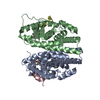
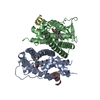
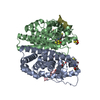


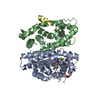

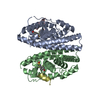
 PDBj
PDBj















